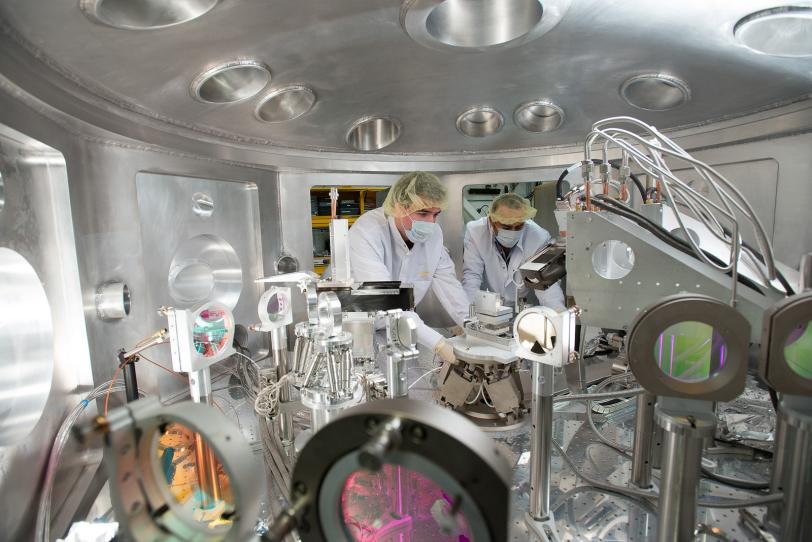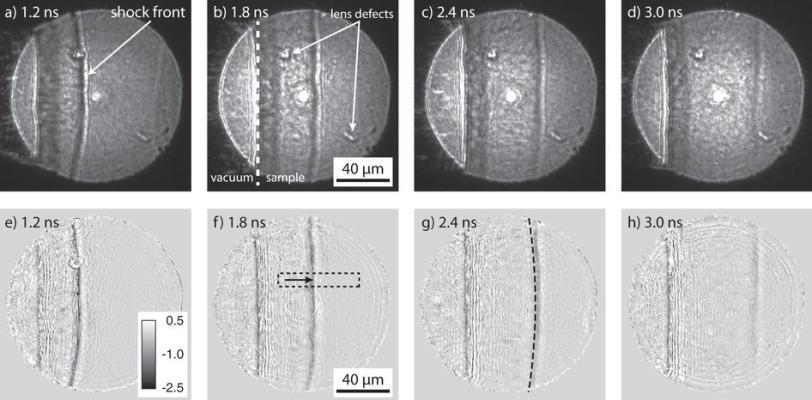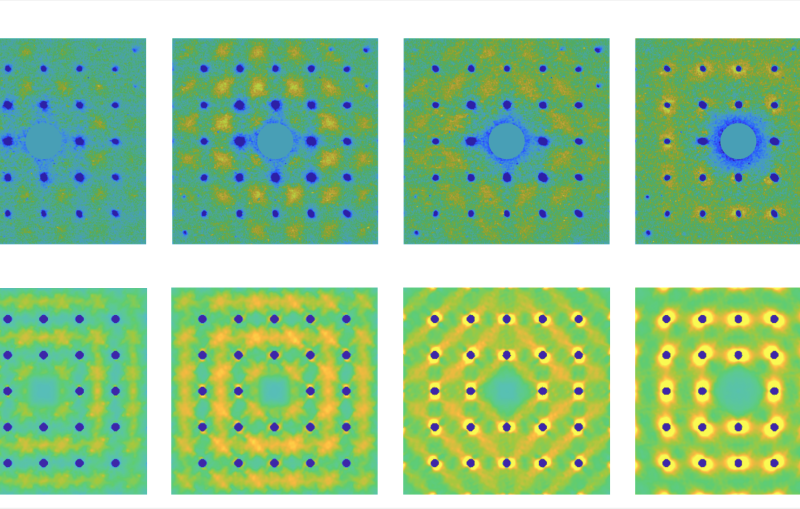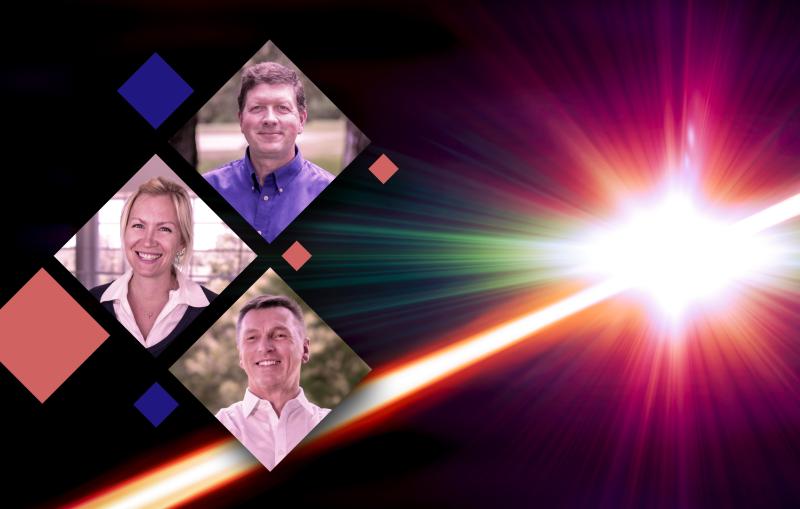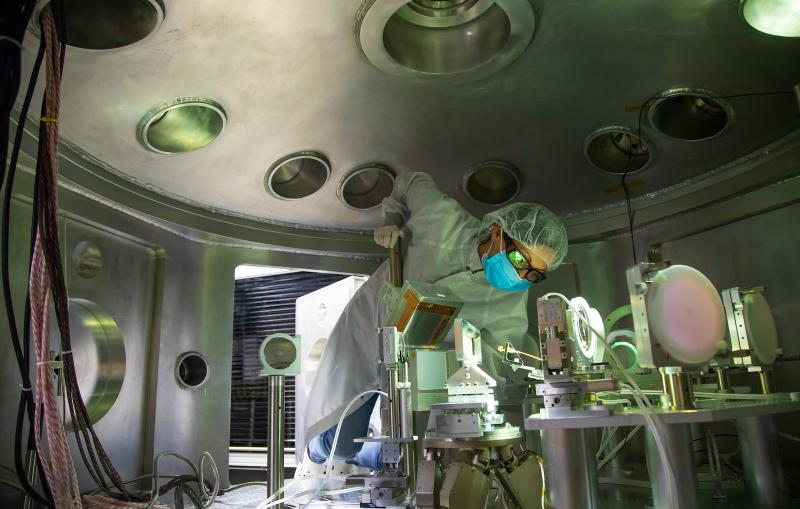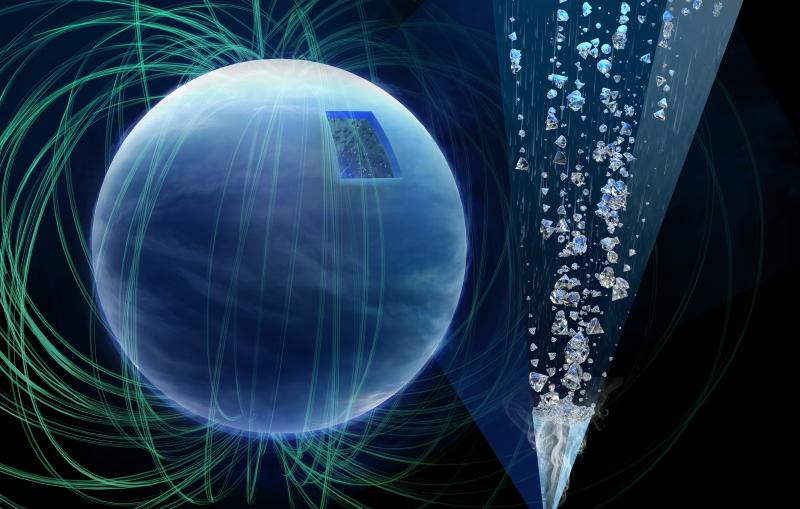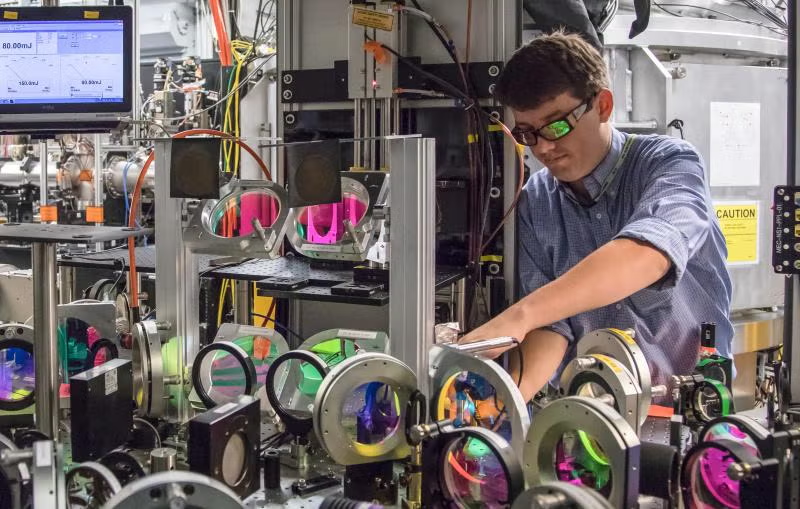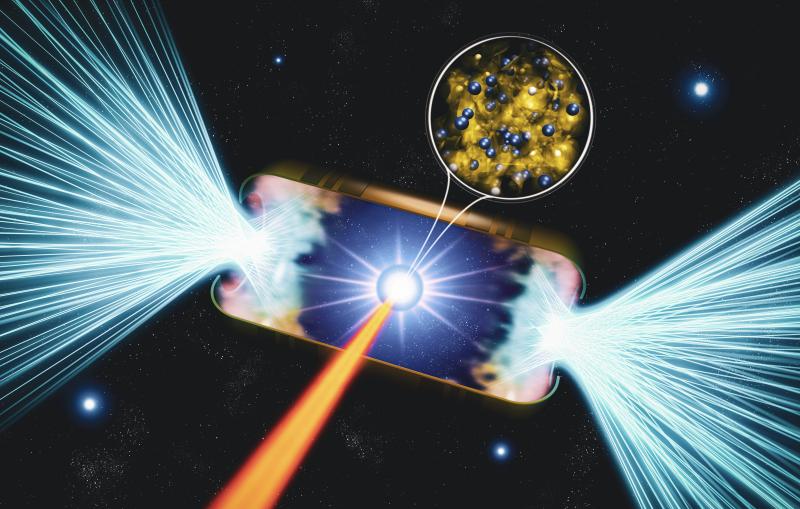Scientists Drive Tiny Shock Waves Through Diamond
X-ray Laser Brings the Physics of Exploding Stars into the Lab
Researchers have used an X-ray laser to record, in detail never possible before, the microscopic motion and effects of shock waves rippling across diamond.
The technique, developed at the Department of Energy's SLAC National Accelerator Laboratory, allows scientists to precisely explore the complex physics driving massive star explosions, which are critical for understanding fusion energy, and to improve scientific models used to study these phenomena.
"What is really exciting is that we can capture images of what happens on microscopic scales," said Bob Nagler, a staff scientist at the Linac Coherent Light Source (LCLS) X-ray laser, a DOE Office of Science User Facility. "People have used X-rays to produce images of shock waves, but never on the tiny scale that LCLS makes possible.” The results were published June 18 in Scientific Reports.
The ability to measure shock wave properties so clearly at this scale, down to one-thousandth of a meter, can be useful to understanding the fundamental physics at work on far larger scales, too, he said.
Using X-rays to ‘Freeze’ Shock Waves
In the experiment, researchers used a powerful optical laser pulse to trigger shock waves in thin, inch-long slivers of diamond. Then they hit the diamond samples with LCLS X-ray pulses at time intervals of hundreds of trillionths of a second, or hundreds of picoseconds. The optical laser destroyed the diamond samples, so new samples were required for each image.
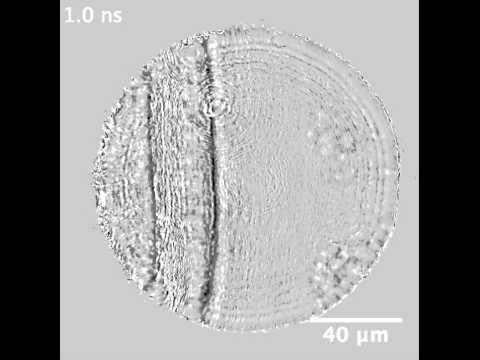
Diamond Shock Wave at LCLS
Researchers compiled the resulting X-ray images into an ultra-slow-motion "movie" about 3 billionths of a second long that shows how a shock wave whips through the diamond faster than the speed of sound.
"LCLS’ pulses, just 50 quadrillionths of a second long, ‘freeze’ the motion of this elastic wave as it's propagating through the material," said Andreas Schropp, the lead author of the study, who is a staff scientist at Germany's DESY lab.
The researchers used an X-ray technique called magnified phase-contrast imaging to translate density changes in diamond into vivid, high-resolution shock wave images.
The experiment yielded information about the compression of the diamond's structure and the pressure changes caused by the shock wave.
Upgrades Provide a View Inside Shocked Materials
The experiment was one of the first using a specialized Matter in Extreme Conditions experimental station at LCLS that is designed to explore extreme states, including those never before directly measured and observed, using powerful X-rays.
The optical lasers have since been upgraded to reach higher powers, and scientists now have the ability to couple shock wave imaging with another X-ray technique, called wide-angle X-ray scattering, that allows them to explore changes to the atomic structure of the material during a shock wave.
"This allows us to see how materials behave when they melt, to see the dynamics of materials as they change from one structure to the next," Nagler said. "This has implications for geoscience, such as understanding the physics of matter deep inside the interior of large planets."
Nagler said SLAC scientists have also just completed a new standardized platform that will make it far easier to set up and conduct a wide range of shock wave experiments using different materials and laser configurations.
Researchers participating in the study were from SLAC’s LCLS; Lawrence Livermore National Laboratory; DESY lab and Dresden University of Technology in Germany; Swinburne University of Technology in Australia; and University of Oxford in the U.K. This work was supported by the DOE Office of Science, Fusion Energy Science; DOE Office of Basic Energy Sciences; Volkswagen Foundation; and the German Ministry of Education and Research.
Citation: A. Schropp, et al., Scientific Reports, 18 June 2015 (10.1038/srep11089)
For questions or comments, contact the SLAC Office of Communications at communications@slac.stanford.edu.
SLAC is a multi-program laboratory exploring frontier questions in photon science, astrophysics, particle physics and accelerator research. Located in Menlo Park, Calif., SLAC is operated by Stanford University for the U.S. Department of Energy's Office of Science.
SLAC National Accelerator Laboratory is supported by the Office of Science of the U.S. Department of Energy. The Office of Science is the single largest supporter of basic research in the physical sciences in the United States, and is working to address some of the most pressing challenges of our time. For more information, please visit science.energy.gov.
